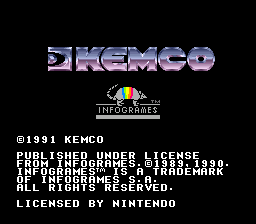

Well, I hope that it was an entertaining read, see you next month, and if you have any info & tips on the subject, please share it. That, and the fact that the Avatar from Ultima VI looks like a chubby kid if you don’t fix the ratio: But driven by inner autism autism autism I fully intend the CRPG Book to be very visual, presenting all games in big colorful images, and having them look as the developers intended is a nice thing. So yeah, I don’t really blame people much for not paying attention to this. On the Ultima V review above, for example, the text had to about 400 characters shorter than non-corrected reviews are. It seems like little, but can mean a lot when working with limited space.

Correcting the aspect ratio means increasing the height of every image in about 20%. So the best solution is to Print Screen DOSBox with the correction enabled. Pixels are tricky, and simply saving the image results in a blurry mess:ĭ OSBox has the option to correct the aspect ratio (that comes disabled by default, another enigma), but even if you take a screenshot with it, the program still exports a 320×200 screenshot. Sure, you can immediately preview it by selecting “correct aspect ratio” on the View menu… but you can’t easily export the corrected version, Adobe knows why. Even with Photoshop, adjusting the pixel aspect ratio on existing screenshots is a pain. Add in the fact that machines such as the Amiga had all sorts of crazy resolutions and you’ll see why it’s a very confusing subject, with very little trusty information.Ģ – It requires some annoying work. This article from NFC Games explains how CRT monitors worked their magic on games, this one from Nerdy Pleasures goes more in-depth on resolutions & ratios, and some specific examples such as the DOOM wikialso explains it a bit, but that’s about all you’ll find. Google this subject and you’ll see how little info there’s about it.
#PLAYING DRAKKHEN AMIGA EMULATOR HOW TO#
Now, I can imagine numerous reasons for that:ĮDIT: I’ve since expanded upon this subject and how to better adjust the aspect ratio in a dedicated Gamasutra article:ġ – Lack of information. However, as obvious as it is after you see it, we rarely get corrected screenshots from old games, be it in websites, magazines or even books. (And yes, Khajiit weren’t furries back then). Jokes about Bethesda’s equipment design aside, I think we can all agree that a Round Shield should be… ahn… round! So the image on the right makes a lot more sense. The one on the right had its aspect ratio corrected, to be as gamers would see back in the 90’s in their CRT monitors: Looking bellow, the left image is a raw 320×200 screenshot of Elder Scrolls: Arena on DOSBox. So if you don’t stretch it, things get weird. Aware of this, those magnificent men in their paleozoic machines made the art knowing that it would be stretched.

But the glorious analog monitors of yore were 4:3, and stretched the image to fit the whole screen. Then why the screenshots we usually see from DOS-era games are widescreen? Because they are WRONG!ĭue to n reasons, DOS-era games were rendered at 320×200. Some of you may recall that widescreen monitors weren’t available back in the days. What’s this, you ask? Well, it’s a tricky subject. (Kudos to Arhu from RPG Watch for the reminder). They are the first where I corrected the pixel aspect ratio. Besides the very passionate writing, I’d like to call special attention to the screenshots in the review. Frazier sent me this awesome Ultima V review. Today, among the many reviews made this month, I’d like to highlight this one: Just saying every month that I got X reviews done seems boring, so I’ll try to post something more interesting for everyone. Now, the whole process of making this book isn’t very exciting… I try to find reviewers, they send me the reviews, we debate it, I procrastinate layout them and we’re done, onwards to the next one.
#PLAYING DRAKKHEN AMIGA EMULATOR UPDATE#
And another months goes by! This means I should write another update (a self-imposed goal).


 0 kommentar(er)
0 kommentar(er)
